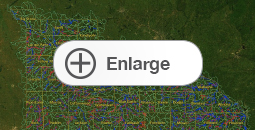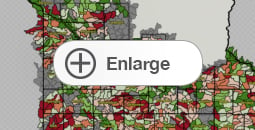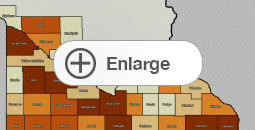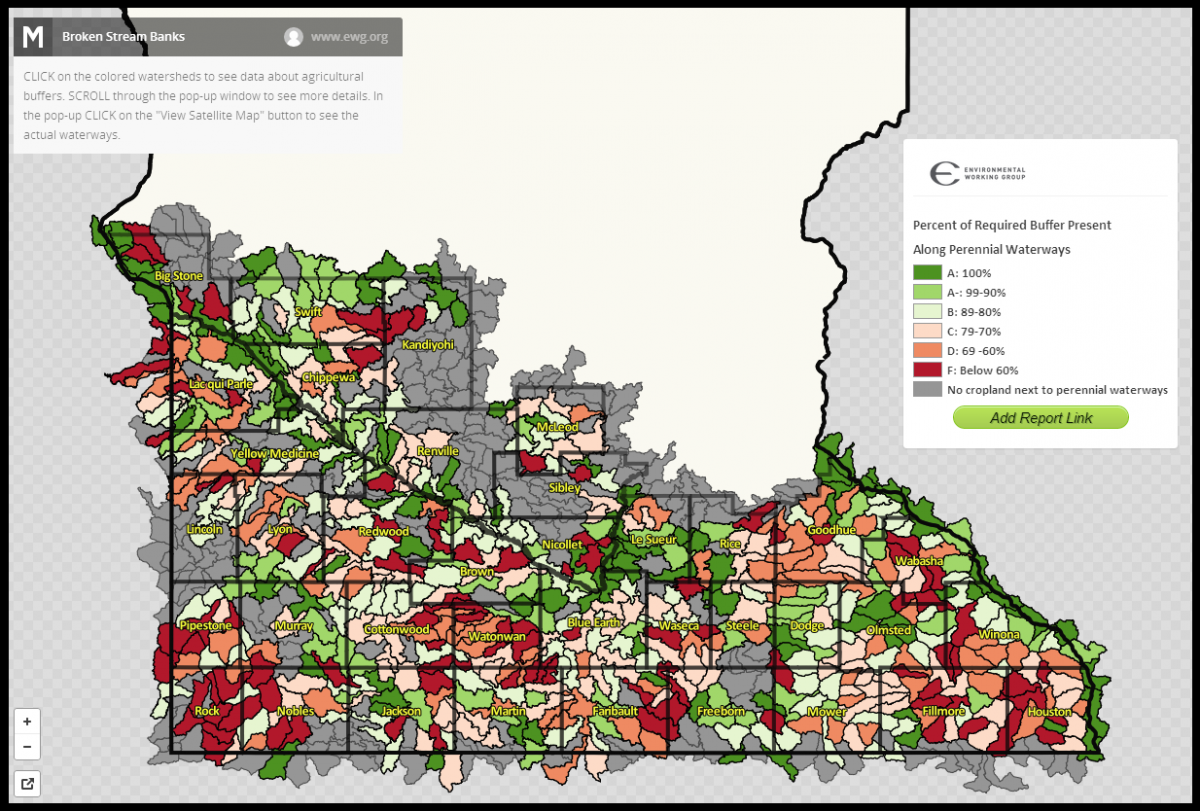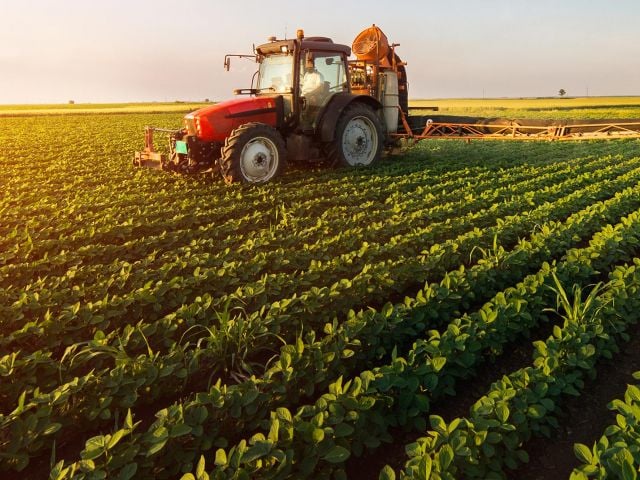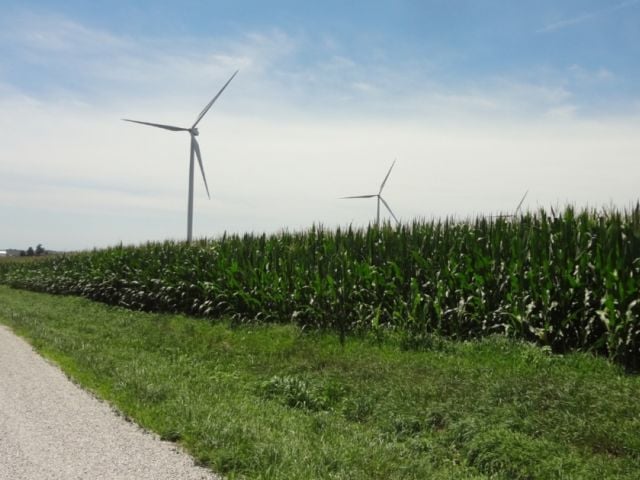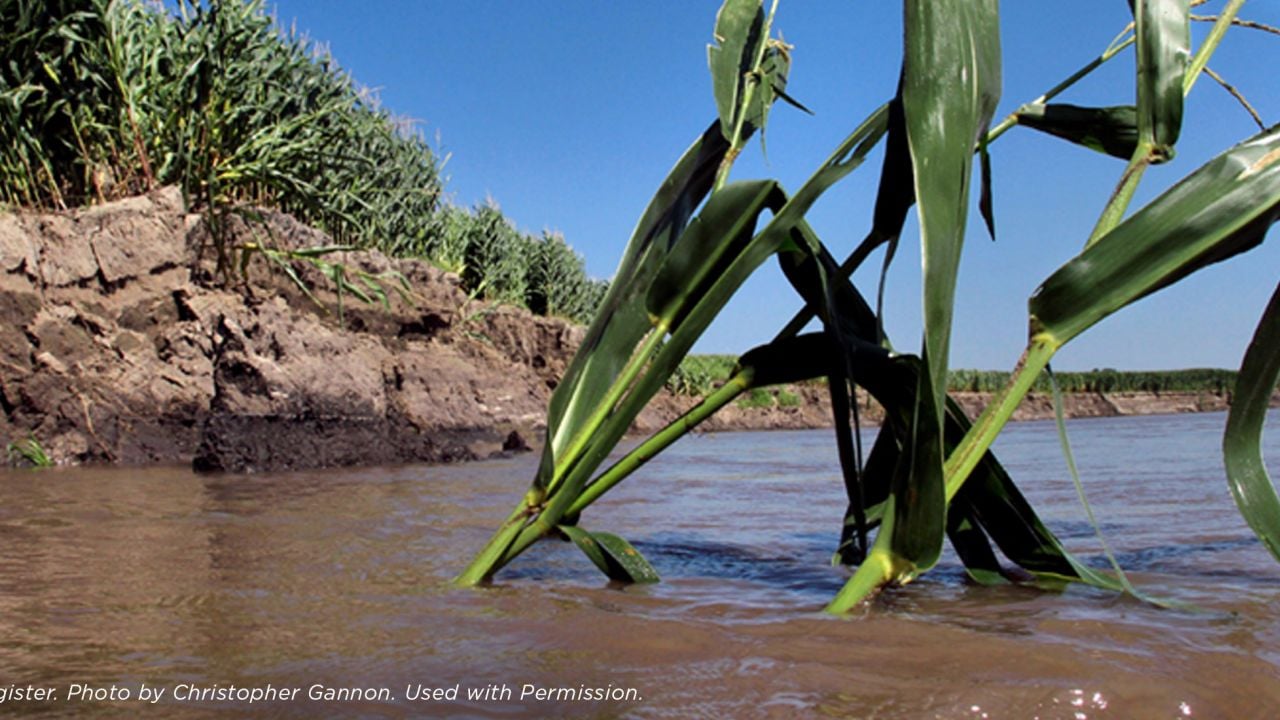
Water pollution from farmland is a major problem in southern Minnesota and wherever row crops dominate the landscape across the United States. Much of this pollution can be prevented by the conscientious use of riparian buffers – strips of grass, trees or other permanent vegetation maintained along the banks of rivers, streams, lakes and other waterways.
Sign up to receive email updates, action alerts, promotions to support our work and more from EWG – including our Midwest newsletter. You can opt-out at any time:
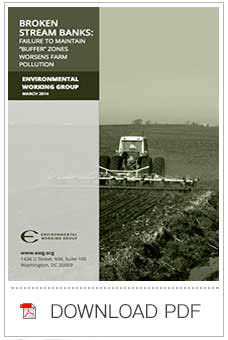
Minnesota is a national leader in recognizing the importance of these buffers in combatting agricultural pollution. The state’s Shoreland Management Act confers legal protection of riparian buffers between most waterways and farmland. Like any other law, however, it must be enforced to be effective.
In 2013, the Environmental Working Group used high-resolution aerial photography to assess how well the law is working and to help county and state officials in their efforts ensure the required buffers are maintained between row crops and public waterways.
This report and the interactive maps show what EWG found.
Only 18% of perennial river and stream banks in agricultural areas are fully protected.
| Grade | Percent of Required Buffer Present | Missing Buffer Acres | Number of Waterways | Percent of Waterways |
|---|---|---|---|---|
| A | 100% | 0 | 87 | 18% |
| A- | 99-90% | 59.4 | 57 | 12% |
| B | 89-80% | 235.3 | 81 | 17% |
| C | 79-70% | 626.1 | 93 | 19% |
| D | 69-60% | 673.7 | 66 | 14% |
| F | 59-0% | 690.5 | 101 | 21% |
| Total | 2,285 | 485 | 100% |
While sizeable numbers of landowners maintain the required 50-foot riparian buffers, many others do not. Buffers are often far narrower than required and in some cases are completely missing. Overall, about 72 percent of the required buffering acres were in place in agricultural areas. But the overall average is misleading, because there are large differences among waterways. Only 18 percent (87 waterways) earned an A, meaning 100 percent of the required buffer was maintained along the waterway. In contrast, 21 percent (101 waterways) got a failing grade – less than 60 percent of the buffer acreage was in place.
Waterways that earn top grades are frequently next door to areas with failing grades.
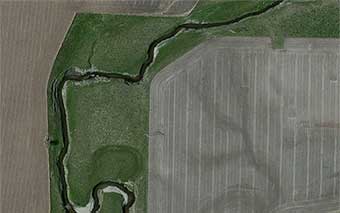
A-Grade
The wide-strip of vegetation along this stream filters out pollutants and keeps the stream bank from collapsing. Runoff and broken banks are a major source of pollution in southern Minnesota waterways.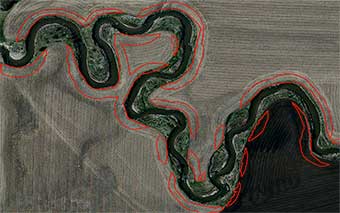
F-Grade
The vegetation along this stream is far narrower than 50-feet – in some places crops are planted right up the stream edge. Poorly protected stream banks like this undo the water quality gains produced by other landowners maintaining wide buffers.Executive Summary
Water pollution from farmland is a major but largely preventable problem in southern Minnesota and wherever row crops dominate the landscape across the United States. Much of this pollution can be prevented by the conscientious use of riparian buffers - strips of grass, trees or other permanent vegetation maintained along the banks of rivers, streams, lakes and other waterways.
Minnesota's shoreland management rules require installation and protection of 50-foot wide riparian buffers between cropland and public waterways. These progressive requirements, which are rare in large agricultural states, confer legal protection on shoreline buffer zones that play a critical role in reducing polluted runoff and restoring broken stream banks.
Like any other law, however, it must be enforced to be effective.
Using a combination of high-resolution aerial photography and the Minnesota Public Waters Inventory (PWI) GIS data layer, EWG found that while numerous agricultural landowners maintain the required 50-foot riparian buffers along perennial rivers and streams, many others do not. Healthy, effective vegetative buffers are even scarcer alongside smaller waterways – public drainage ditches and intermittent streams.
This is bad news for water quality in southern Minnesota. The good news, however, is that better enforcement of the shoreland management rule offers a remarkable opportunity to help clean up southern Minnesota’s troubled waterways.
Perennial Rivers and Streams
EWG’s analysis found that only 18 percent (87) of waterways adjacent to cropland earned an A grade – meaning that 100 percent of the acreage within 50 feet of the stream bank was covered by the required buffers, while 21 percent (101 waterways) got a failing grade – meaning less than 60 percent of the required buffer acres was present. Another 14 percent (66 waterways) earned a D because only 60 to 69 percent of the buffer acres was maintained. Combining the highest and lowest grades, 30 percent earned an A or A- (90 to 99 percent of buffers acres in place), while 35 percent earned a D or F.
Watershed Map
Perennial rivers and stream are far better protected in some watersheds than in others. Click on the map to see how well stream banks are protected in your area.
In some cases, it was obvious that eroding stream banks were cutting into what might once have been an adequate buffer. Most of the time, however, there was no obvious explanation for the striking differences in the widths of the buffer zones other than uneven management practices of the landowners or operators involved. In fact, EWG’s analysis found a jumbled pattern – evident in this interactive map – in which watersheds and waterways that earn top grades are frequently next door to areas with failing grades.
Small Perennial Streams Hard Hit
Although small perennial streams amount to 31 percent of the miles of waterways EWG evaluated, they account for 45 percent of the total acreage of missing buffer zones.1 Large rivers and streams make up fully 48 percent of total waterway miles but account for only 28 percent of the missing buffer acreage. Where cropland has encroached on the protected zone, what remains of the buffer tends to be far narrower than the required 50 feet.
This is particularly bad news for southern Minnesota’s water quality. Smaller streams are more intimately connected to agricultural land than larger rivers, and buffering them has the largest impact on reducing polluted runoff.
Drainage Ditches and Intermittent Streams Are The Hardest Hit
EWG analyzed a sub-sample of the seven watersheds in southern Minnesota that have more than 20 miles of public drainage ditches associated with cropland, along with three watersheds that have more than 30 miles of intermittent streams in the Inventory’s GIS layer. EWG found that, on average, 99 percent of the 16.5 feet of buffer required by Minnesota drainage law was present along th public ditches we assessed. In contrast, just 55 percent of the acreage within 50 feet of the ditch banks was buffered – a failing grade under the far more protective shoreland management rule. Five of the seven watersheds we investigated also got a failing grade. The other two earned a D and a C.
Intermittent streams in the Public Waters Inventory GIS layer present an even more troubling picture. Many of the waterways classified as intermittent have been plowed over and are now part of a field of row crops. Some of these intermittent streams are well buffered, while others have a grassed waterway that follows the course of the stream. But many have no protection at all.
Conclusion
Southern Minnesota and the Minnesota River basin in particular face serious problems with pollution by sediment and nutrients. These problems cannot be solved unless polluted runoff from cropland and stream bank erosion is dramatically reduced. Row crop agriculture must play a leading role in cleaning up southern Minnesota’s waterways. In 30 counties, row crops occupy more than 50 percent of the total land area, and in 13 counties row crops account for 75 percent or more.
Maintaining a buffer of permanent vegetation between row crops and waterways will not solve all of the pollution problems in the basin. But science and professional experience show that such buffers make an important contribution to cleaner water and stronger stream banks.
Minnesota’s progressive shoreland management rule presents a remarkable opportunity to accelerate progress toward cleaner water. Many agricultural landowners are maintaining the required buffers between cropland and waterways, but others are not, even along perennial rivers and streams. A concerted effort by state and county governments to ensure that the required buffers are in place would be an important step forward in harmonizing agricultural production and clean water in southern Minnesota. Better enforcement would ensure that the water quality gains achieved by those landowners who do comply with the agricultural buffer requirements are not undone by the poor performance of others – often their neighbors – who do not.
Some counties and local organizations have already stepped forward with initiatives to make sure that landowners understand their obligations under the shoreland management rule and ensure that those obligations are met. Our investigation shows, however, that much more needs to be done.
EWG hopes our report will contribute to that important work.
1 EWG divided perennial rivers and streams into three classes based on length. We classified waterways longer than 50 miles as "large," those 25-to-50 miles long as "medium," and those 1-to-25 miles long as "small."
Water pollution from farmland is a major problem in southern Minnesota and wherever row crops dominate the landscape across the United States. According to the Environmental Protection Agency, agriculture is the number one source of pollution in waterways identified by states as too polluted to be used as public water supplies, for recreation or for other purposes. The Agency’s most recent water quality report found that agricultural runoff degraded more than 125,000 miles of surveyed rivers and streams across the country.1
Much of this pollution can be prevented by the conscientious use of riparian buffers – strips of grass, trees or other permanent vegetation that are maintained along the banks of rivers, streams, lakes and other waterways. Buffers play a critical role reducing the amount of sediment and nutrients that wash off crop fields.
Minnesota is a national leader in recognizing the importance of these buffers in combatting agricultural pollution. The state's shoreland management rule confers legal protection of riparian buffers between most waterways and farm land.2 The rule promulgated to implement the law established a “shore impact zone,” defining it as the area between the stream bank and “a line parallel to and 50 feet from the ordinary high water level.” For “parcels with permitted agricultural land uses,” the statute requires that the shore impact zone be “maintained in permanent vegetation or operated under an approved conservation plan.”
These progressive requirements, which are rare in large agricultural states, create a remarkable opportunity to improve water quality. Like any other law, however, it must be enforced to be effective.
In 2013, the Environmental Working Group launched a project to assess how well the law is working and to help county and state officials in their efforts to make sure that the required buffers are maintained between row crops and public waterways. EWG’s research follows on a 2010 study by the Minnesota Board of Water and Soil Resources that also sought to measure the condition and maintenance of the state’s riparian buffers.3 That study concluded that:
- conflicting interpretations of the law’s definitions of riparian land use had left public waters at risk;
- drainage ditches in heavily agricultural areas often had the fewest buffers;
- the limited financial incentives to install and maintain buffers were usually outweighed by other factors, such as the lure of higher prices for commodities; and
- there was no digital geographic information system (GIS) data available with the necessary precision to accurately assess the state of riparian buffers.
That same year, the Minnesota Center for Environmental Advocacy (MCEA) set out to build a GIS data layer that could accurately reflect land cover within the 300-foot shoreland zone - including the presence or absence of buffering vegetation within 50 feet of public waterways. Due to the enormity of this task, the Center limited the project to public waterways in Blue Earth County and in the Middle Minnesota, Cedar River, Sauk River, Root River and Pomme de Terre watersheds.4 5 6 7 8 9 The analysis yielded numerous detailed atlases classifying the vegetative cover adjacent to all public waters in the area. In all, the Center found that cropland often encroached into the 50-foot shoreline protection zones.
In its own study, EWG used a combination of high resolution aerial photography and the Minnesota Public Waters Inventory (PWI) GIS data layer to evaluate how much of the required buffer acres were actually in place along perennial rivers and streams in 37 southern Minnesota counties. We also looked at a small sub-sample of the public drainage ditches and intermittent streams in the Inventory’s GIS layer. We limited our analysis only to waterways that flowed through land planted with row crops.
This report and the interactive maps below show what EWG found.
Agricultural Runoff Clouds Waterways
Polluted runoff from row crops creates serious water pollution problems in southern Minnesota.
After years of neglect, however, state officials are taking action to clear the sediment-laden waters of the Mississippi River, from its confluence with the Minnesota River to the upper half of Lake Pepin. Water that is too cloudy – the technical term is turbidity – prevents sunlight from reaching aquatic plants and suffocates much of a river’s aquatic life.
Recently, the Minnesota Pollution Control Agency (MPCA) released a statewide Minnesota Nutrient Reduction Strategy designed to reduce the nutrient pollution – primarily phosphorus and nitrogen – that threatens lakes, streams and groundwater and contributes to the massive “dead zone” that appears each year in the Gulf of Mexico. The strategy seeks to reduce phosphorus pollution by 35 percent and nitrogen pollution by 25 percent by 2025.10
Runoff from agricultural land – primarily row crops – is the major source of this pollution. As the nutrient reduction strategy states, “agricultural sources contribute an estimated 38 percent of the statewide phosphorus load” and “73 percent of the statewide nitrogen load.” MPCA is also developing a complementary strategy to cut sediment pollution.
The primary culprit for the pollution threatening Lake Pepin and the Mississippi River south of the Minneapolis–St. Paul area is the Minnesota River, which is overloaded with sediment and nutrients after flowing hundreds of miles through the state’s rich farmland. By the time it meets the Mississippi, the cloud of sediment carried by the Minnesota River is so dense it is visible from the sky. (Figure 1)
Figure 1: Minnesota River delivers sediment and nutrients to the Mississippi River
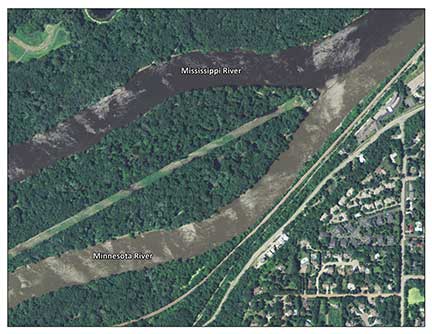
A heavy load of sediment makes the Minnesota River look paler where it joins the cleaner Mississippi River in the Twin Cities. (2013, NAIP)
The Pollution Control Agency has been working with a coalition of local agencies and organizations to set a regulatory limit on the amount of sediment in the water – called a Total Maximum Daily Load (TMDL) – at the point where the Minnesota River flows through the south metro area. The goal is to increase water clarity, rejuvenate plant and animal life and improve recreational opportunities. Implementation of the agency’s proposed water quality standard for turbidity is to begin after officials respond to public comments and the U.S. Environmental Protection Agency signs off.11 12
The Pollution Control Agency has also developed water quality standards for Lake Pepin, where excess nutrients clog the water with toxic algae blooms and deplete the oxygen that sustains aquatic life. These standards, too, are currently awaiting public comment.13 14 Upstream, along the Minnesota River and Blue Earth River Basin, planning has begun to reduce the sediment runoff in order to reach the TDML targets.15 16
Riparian Buffers Cut Pollution
Better use of riparian buffers could do a great deal to cut the sediment and nutrients that run off cropland and cloud the Minnesota and Mississippi rivers.
The buffers work in several useful ways, including:
- filtering and retaining sediment;
- immobilizing, storing and inactivating nutrients and other chemicals;
- sustaining healthy stream environments and preventing stream banks from eroding;
- maintaining vigorous aquatic and terrestrial habitats;
- storing water and recharging subsurface aquifers; and
- reducing flooding or moderating its impact.17
Multiple studies have shown that buffers can reduce sediment and nutrients in surface runoff from crop fields by 12-to-90 percent.18
Moreover, the plant roots in vegetative buffers reinforce and strengthen stream banks, helping to keep them from eroding and slumping into the water. One Minnesota study found that slumping stream banks contributed 31-to-44 percent of the total sediment dissolved in the Blue Earth River.19 In Iowa’s Walnut Creek, two studies found that stream banks contributed 50-to-80 percent of the sediment load.20 21
By contrast, a long-term project in Iowa’s Bear Creek found that buffering stream banks with strips of grass and/or trees reduced erosion by 80 percent.22
Maintaining a buffer of permanent vegetation between row crops and waterways will not solve all of the pollution problems in the basin. Buffers will do little or nothing to capture nitrogen and other pollutants flowing through tile drain systems. But science and professional experience show that buffers can make an important contribution to cleaner water by trapping phosphorus and sediment running off farm fields and by cutting stream bank erosion.
Minnesota’s progressive shoreland management rule protects critical riparian buffers on agricultural land, providing a powerful tool to help meet the goals for cleaning up the state’s waterways. EWG’s assessment, however, shows that it will take more work to harvest the full benefit of the law, especially on smaller streams and ditches.
EWG Focused on 37 Southern Counties
We focused our assessment on the 37 southern Minnesota counties for which recent high-resolution aerial photography is available.23 These counties account for roughly 57 percent of all acres of row crops in the state, according to the U.S. Department of Agriculture’s (USDA) 2012 cropland GIS data layer. In 13 counties, row crops occupy more than 75 percent of the land area. In the 30 counties, row crops take up more than 50 percent.
EWG analyzed high-resolution color infrared imagery taken in 2011 to determine what percentage of the perennial rivers and streams in the Minnesota Public Waters Inventory GIS layer were actually bordered by some or all of the required 50-foot buffers (See Box 1). We limited the analysis to rivers and streams that are longer than 1 mile, which account for 97 percent of the 8,649 acres of required buffers in the counties studied.
We manually checked every mile of perennial rivers and streams for errors in our analysis by comparing the 2011 remotely sensed GIS data outputs with 2012 or 2013 imagery. If we found that buffers that were listed as missing in 2011 were present in 2012 or 2013, we lowered the estimate of missing buffer acreage accordingly. If we found, however, that buffers present in 2011 were missing in 2012 or 2013, we did not increase our estimates of missing buffer acres. This means our results likely underestimate the extent to which cropland is currently encroaching on the required buffers.
EWG also compared the Center for Environmental Advocacy’s findings to our own results for a smaller set of perennial rivers and streams in the Middle Minnesota Watershed and found that in 82 percent of the cases, the 2008 and 2011 results were the same.
Click on the map to see which perennial rivers and streams in each watershed lacked the required buffers. (Figure 2)
Figure 2: Perennial rivers and streams are far better protected in some watersheds than in others.
Click on a colored watershed to see how well stream banks are protected.
Minnesota’s Public Waters Inventory
The Minnesota Department of Natural Resources (MDNR) defines “public watercourses” as natural or altered waterways that drain an area greater than two square miles and have a definable bed and banks, as specified in Minnesota Statute, section 103G.005. The department maintains a Public Water Inventory (PWI) of all public waters, watercourses and basins – including perennial and intermittent rivers, streams and drainage ditches – under its regulatory jurisdiction.
In 2008, watercourses identified on the inventory’s paper maps were digitized into a GIS layer. This GIS layer made EWG’s assessment possible.
Not all public drainage ditches are accurately mapped, because authorities around the state operate differently and have varying levels of record and map quality. As a result, the Inventory’s GIS layer does not include all public ditches. The Inventory also includes intermittent streams because they meet the criteria written in the statute and therefore fall under the same jurisdiction as perennial waterways.
Source: Minnesota Department of Natural Resources 2008. Minnesota Public Waters Inventory. http://deli.dnr.state.mn.us/metadata.html?id=L390006590202. Accessed March 1, 2013. St. Paul, MN
Figure 3: Three Types of Public Waterways in Southern Minnesota
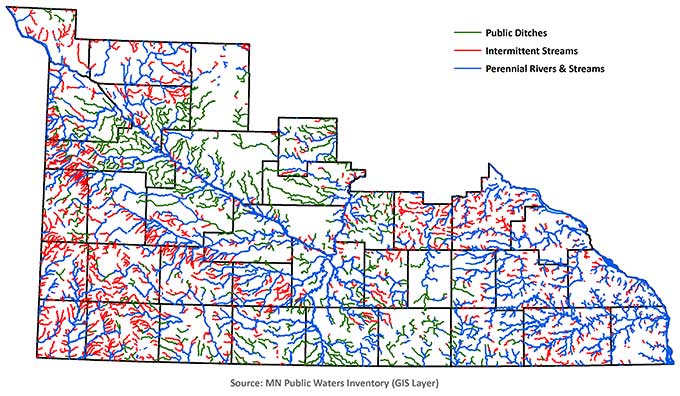
EWG assessed the presence or absence of buffers along all the perennial rivers and streams in the Inventory’s GIS layer that were adjacent to cropland. We only assessed a small subsample of the ditches and intermittent streams in the Inventory that were associated with cropland. The perennial rivers and streams we assessed make up 56 percent – about 8,000 miles – of all public waterways in agricultural areas of the 37 counties studied. The intermittent streams and ditches we did not assess comprehensively account for 27 and 17 percent respectively of all waterways in agricultural areas on the PWI GIS layer. (Figure 3)
The distribution of different categories of waterways on the Inventory’s GIS layer varies from county to county. Some have very few perennial rivers and streams in agricultural areas that are longer than one mile. The grey areas in the map in Figure 2 are watersheds with no such perennial rivers and streams longer than one mile. Similarly, some counties have many miles of intermittent streams and ditches, while others have very few.
Table 1: Only 18 percent of perennial river and stream banks in agricultural areas are fully protected.
| Grade | Percent of Required Buffer Present | Missing Buffer Acres | Number of Waterways | Percent of Waterways |
|---|---|---|---|---|
| A | 100% | 0 | 87 | 18% |
| A- | 99-90% | 59.4 | 57 | 12% |
| B | 89-80% | 235.3 | 81 | 17% |
| C | 79-70% | 626.1 | 93 | 19% |
| D | 69-60% | 673.7 | 66 | 14% |
| F | 59-0% | 690.5 | 101 | 21% |
| Total | 2,285 | 485 | 100% |
Figure 4: Worst protected perennial waterways are concentrated in four areas.
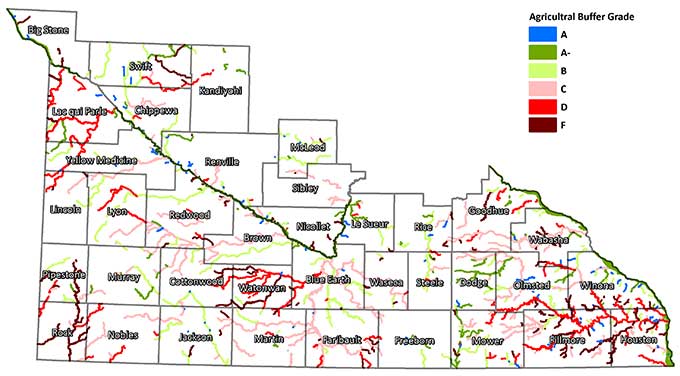
Figure 5: Four examples of what we found along perennial waterways.
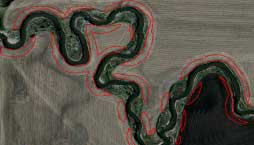
Row crops were planted right up to stream banks along many perennial waterways.
Source ESRI, Digital Globe.
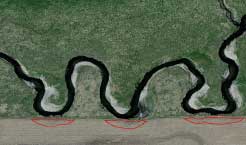
In some cases, buffers may have been missing because streams were cutting into crop fields.
Source ESRI, Digital Globe.
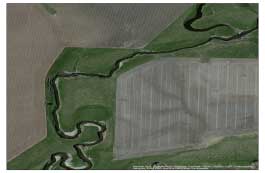
Some perennial waterways were well protected by buffers along their banks.
Source ESRI, Digital Globe.
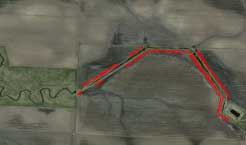
Buffers along perennial waterways varied greatly between adjacent fields, especially if the waterway had been channelized as in this photo.
Source ESRI, Digital Globe.
Overall, EWG found that far too many southern Minnesota waterways lack all or part of the required 50-foot wide buffer zones between cropland and the stream bank. Buffers were most likely to be missing along the smaller perennial streams that are closely integrated with agricultural land. Drainage ditches and intermittent streams in our subsample had even fewer buffers.
EWG graded waterways using the traditional A-B- C-D-F system based on how much of the required 50-foot buffer acres were present, according to this system:
A – 100 percent of the required acres
A minus – 90-to-99 percent
B – 80-to-89 percent
C – 70-to-79 percent
D – 60-to-69 percent
F – less than 59 percent
Perennial Rivers and Streams
The data show that while sizeable numbers of landowners maintain the required 50-foot riparian buffers, many others do not. Buffers are often far narrower than required and in some cases are completely missing. Overall, about 72 percent of the required buffering acres were in place in agricultural areas – an average grade of C (Table 1). But the overall average is misleading, because there are large differences among waterways.
Only 18 percent (87 waterways) earned an A, while 21 percent (101 waterways) got a failing grade. Another 14 percent (66 waterways) earned only a D. Combining the highest and lowest grades, 30 percent earned an A or A- while 35 percent earned a D or F.
Figure 4 paints a compelling picture of just how few waterways were fully buffered. The map shows that perennial streams and rivers with a D or F grade are concentrated in agricultural areas in the southwest, southeast and northwest corners of southern Minnesota and in Watonwan County. In many areas, well-buffered waterways are next door to those with less than 70 percent of the required buffer zones.
In some places, it was obvious that eroding stream banks were cutting into what might once have been an adequate buffer zones. In most cases, however, there was no obvious explanation for the striking differences in the widths of buffer zones of adjacent row crop fields other than variation in practices by the landowners or operators involved. (Figure 5)
EWG’s evaluation revealed other troubling facts. First, we found that row crops often encroached into the 50-foot protected zone, making those buffers far narrower than the required 50-feet. Small perennial streams were particularly hard hit by row crops planted too close to their banks.
In 60 percent of the locations where buffers were too narrow, the buffering vegetation was less than 70 percent of what is required. Less than 60 percent of the required buffer was in place in 30 percent of the locations that were too narrow. Only 3 percent of the narrowed zones had 90-to-100 percent of the required protective buffering.
Most of the too-narrow buffer zones were much narrower than the required 50 feet.
Small Perennial Streams Hard Hit
Figure 6: Small perennial streams account for most of the missing buffer acres adjacent to cropland.
Small streams make up only 31 percent of total miles of perennial waterways.
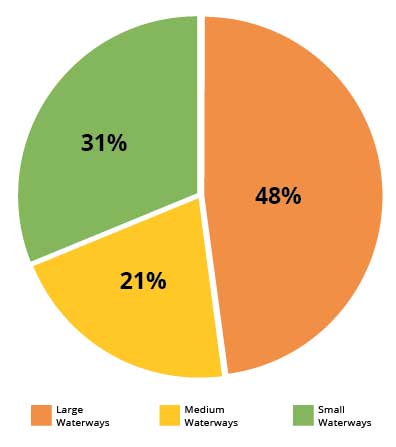
Small streams account for 45 percent of all missing buffers along perennial waterways.
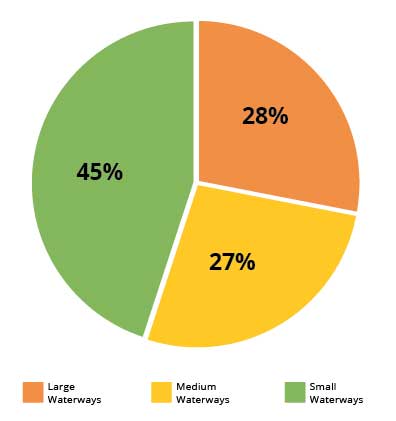
EWG divided perennial rivers and streams in agricultural areas into three classes based on length. We classed waterways longer than 50 miles as “large,” those 25-to-50 miles long as “medium” and those 1-to-25 miles long as “small.”
Although small perennial streams amount to 31 percent of the miles of waterways EWG evaluated, they account for 45 percent of the total acres of missing buffer. Large rivers and streams make up fully 48 percent of total waterway miles but only 28 percent of the missing acres. (Figure 6)
There was also wide variation among large perennial rivers and streams: Some were hard hit by row crops planted too close to their banks, while others had most or all of the required buffer zones. The Rock River, the south fork of the Watonwan River and the south fork of the Root River – all large waterways – got failing grades because they had less than 60 percent of the required buffer acreage. No large rivers got an A, but the Mississippi, Minnesota and Cedar Rivers rated an A- because they had more than 90 percent of the mandated buffer acres. In many cases, some segments of these largest rivers had far more than 50 feet of buffer along their banks.
Medium-sized waterways that got a failing grade include Pipestone Creek, Beaver Creek in Rock County, Riceford Creek, Mud Creek in Swift County and the north fork of the Watonwan River. No medium streams earned an A, but Florida Creek, the South Branch/Middle Fork of the Zumbro River, Le Sueur Creek, the east branch of the Chippewa River, Lime Creek and Dodge Center Creek all earned an A-.
The grades for small streams were distributed very differently than for large or medium-sized rivers. Thirty-three percent of small streams in agricultural areas earned an A or A-, but 36 percent earned a D or F. (Figure 7) It is striking that the buffer grades for large and medium streams follow the classic bell curve – C was the most common grade, and A’s and F’s were less common. However, failing grades were far more prevalent, accounting for fully 45 percent (459 acres) of all the acreage of missing buffers along small streams.
In fact, small streams account for a dispropor- tionate share of all missing buffer zones along perennial rivers and streams of all sizes, and the buffers tend to be far narrower than the required 50 feet.
This is bad news for southern Minnesota’s water quality. Smaller streams are more intimately connected to agricultural land than larger streams, and buffering them has the largest impact on reducing polluted runoff. Since small streams can account for 90 percent of total stream length in a watershed, their riparian zones can have major effects on water quality throughout the basin.24
Figure 7: Buffers Along Small Perennial Streams Are In Bad Shape

Drainage Ditches and Intermittent Streams are Hardest Hit
EWG found that drainage ditches and intermittent streams that are even more directly connected to row crop fields are the least well protected waterways. However, we were unable to complete a comprehensive assessment of buffers along public ditches – drainage ditches under State jurisdiction – and intermittent streams because of time and resource constraints and because many – perhaps most – miles of public ditches do not appear on the Public Waters Inventory GIS layer. The coverage of intermittent streams is even less adequate.
Public Ditches
The GIS layer identifies more than 4,412 miles of public ditches statewide.25 EWG analyzed a sub- sample of the seven watersheds in southern Minnesota that have more than 20 miles of public ditch associated with cropland, according to the Public Waters Inventory’s GIS layer. (Figure 8)
Figure 8: Watersheds Evaluated for Buffers Along Public Ditches and Intermittent Streams Identified in the Public Waters Inventory GIS Layer
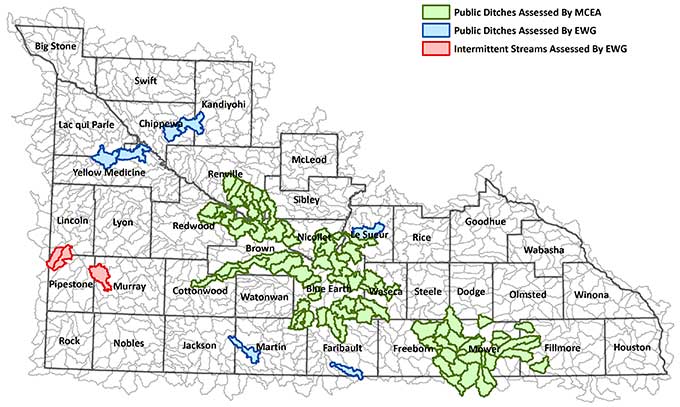
The Minnesota Center for Environmental Advocacy (MCEA) has built a more detailed and comprehensive GIS layer of waterways.26 The Center’s analysis evaluated public waterways adjacent to all land cover types. Given the enormity of the task, the Center limited its assessment of the presence or absence of buffers to Blue Earth County and the Middle Minnesota, Cedar River, Sauk River, Root River and Pomme de Terre watersheds (Figure 8). The analysis yielded a detailed atlas classifying adjacent land cover types for all public waters in more than 200 watersheds. The study found that, on average, only 51 percent of the acres within 50 feet of the ditch banks were buffered.
EWG looked at an entirely different and smaller set of 189 miles of public ditches that bordered cropland, but our results are remarkably consistent with the Center’s findings. EWG found that 99 percent of the 16.5 feet of buffer required by Minnesota’s drainage law was maintained along the public ditches we assessed. In contrast, only 55 percent of the acres within 50 feet of the ditch banks were buffered – a failing grade under the far more protective shoreland management rule. Five of the seven watersheds we investigated also got a failing grade for maintaining buffers along public ditches that were far narrower than 50 feet (Table 2). The remaining two watersheds earned a D and a C.
Table 2: Ditches in Five of Seven Watersheds Got Failing Grades
| Watershed Name | Grade | Percent of 50-foot Buffer Present | Buffer Acres Missing | Buffer Acres Present |
|---|---|---|---|---|
| Headwaters Tenmile Creek | F | 48% | 104 | 94 |
| Stony Run Creek | F | 56% | 72 | 93 |
| City of Raymond-Hawk Creek | D | 60% | 31 | 47 |
| County Ditch No. 15 | F | 50% | 64 | 63 |
| Upper Le Sueur Creek | F | 56% | 56 | 72 |
| Judicial Ditch No. 13 | F | 51% | 45 | 47 |
| County Ditch No. 11 | C | 74% | 21 | 62 |
| Total | F | 55% | 393 | 478 |
Intermittent Streams
Figure 9: Intermittent Streams Become Gullies in Crop Fields.
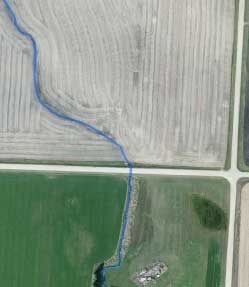
Source: ESRI, Digital Globe
Intermittent streams in the Public Waters Inventory GIS layer present an even more troubling picture. Many of the waterways classified as intermittent no longer have a defined bed or banks. They have been plowed over and are fully part of a row crop field (Figure 9). Some of these intermittent streams are well buffered, and others have a grassed waterway that follows the course of the stream. But many have no protection at all.
EWG surveyed the three watersheds with more than 30 miles of intermittent streams in the Inventory’s GIS layer (Figure 8), a total of 106 miles in all. All three got a failing grade. (Table 3) On average, only 54 percent of the acres within 50 feet of these streams were buffered. Moreover, the vegetative buffers tended to be either completely present or completely absent.
Table 3: Intermittent streams in all three assessed watersheds got failing grades
| Watershed Name | Grade | Percent of 50-foot Buffer Present | Buffer Acres Missing | Buffer Acres Present |
|---|---|---|---|---|
| Upper Beaver Creek | F | 54% | 48 | 57 |
| Upper Flandreau Creek | F | 53% | 14 | 16 |
| Willow Creek-Flandreau Creek | F | 52% | 27 | 29 |
| Total | F | 54% | 89 | 102 |
County Grades
Minnesota counties are responsible for implementing the shoreland management rule. To compare how well they do in ensuring that their perennial rivers and streams are buffered, EWG assembled its results for counties that have more than 12 miles of stream banks on agricultural land subject to the buffer ordinance. (Figure 10)
Figure 10: Counties Vary Widely in Perennial Stream Bank Protection
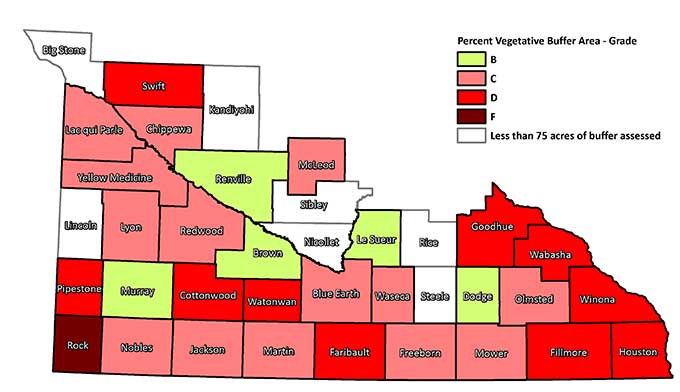
Rock County stands out for having the smallest percentage of required buffers in place. Fully 43 percent of the required acres were missing. No county earned an A or A- for protecting more than 90 percent of the required buffer acres between cropland and perennial rivers and streams. Dodge, Le Sueur, Murray, Brown and Renville counties all earned a B – more than 85 percent of their required buffer acres were in place.
A heavy concentration of counties in south central Minnesota and along the Mississippi River had less than 70 percent of the required buffers in place.
Based on our work and MCEA’s earlier analysis, we strongly suspect that counties with extensive public drainage ditches and intermittent streams would fare far worse than indicated in Tables 2 & 3.
Conclusion
Southern Minnesota and the Minnesota River basin in particular have serious problems with pollution by sediment and nutrients. These problems cannot be solved unless polluted runoff from cropland and stream bank erosion is dramatically reduced. Row crop agriculture must play a leading role in cleaning up southern Minnesota’s waterways. In 30 counties, row crops occupy more than 50 percent of the total land area, and in 13 counties row crops account for 75 percent or more.
Maintaining a buffer of permanent vegetation between row crops and waterways will not solve all the pollution problems in the basin. But science and professional experience show that such buffers make an important contribution to cleaner water and stronger stream banks.
Minnesota’s progressive shoreland management rule presents a remarkable opportunity to accelerate progress toward cleaner water. A sizeable number of agricultural landowners are maintaining the required buffers between cropland and waterways, but many others are not, even along perennial rivers and streams. A concerted effort by state and county governments to ensure that the required buffers are in place would be an important step forward in harmonizing agricultural production and clean water in southern Minnesota. Better enforcement would ensure that the water quality gains achieved by those landowners who do comply with the agricultural buffer requirements are not undone by the poor performance of others – often their neighbors – who do not.
Some counties and local organizations have already stepped forward with initiatives to make sure that landowners understand their obligations under the shoreland management rule and to ensure that those obligations are met. Our investigation shows, however, that much more needs to be done.
EWG hopes our report will contribute to that important work.
